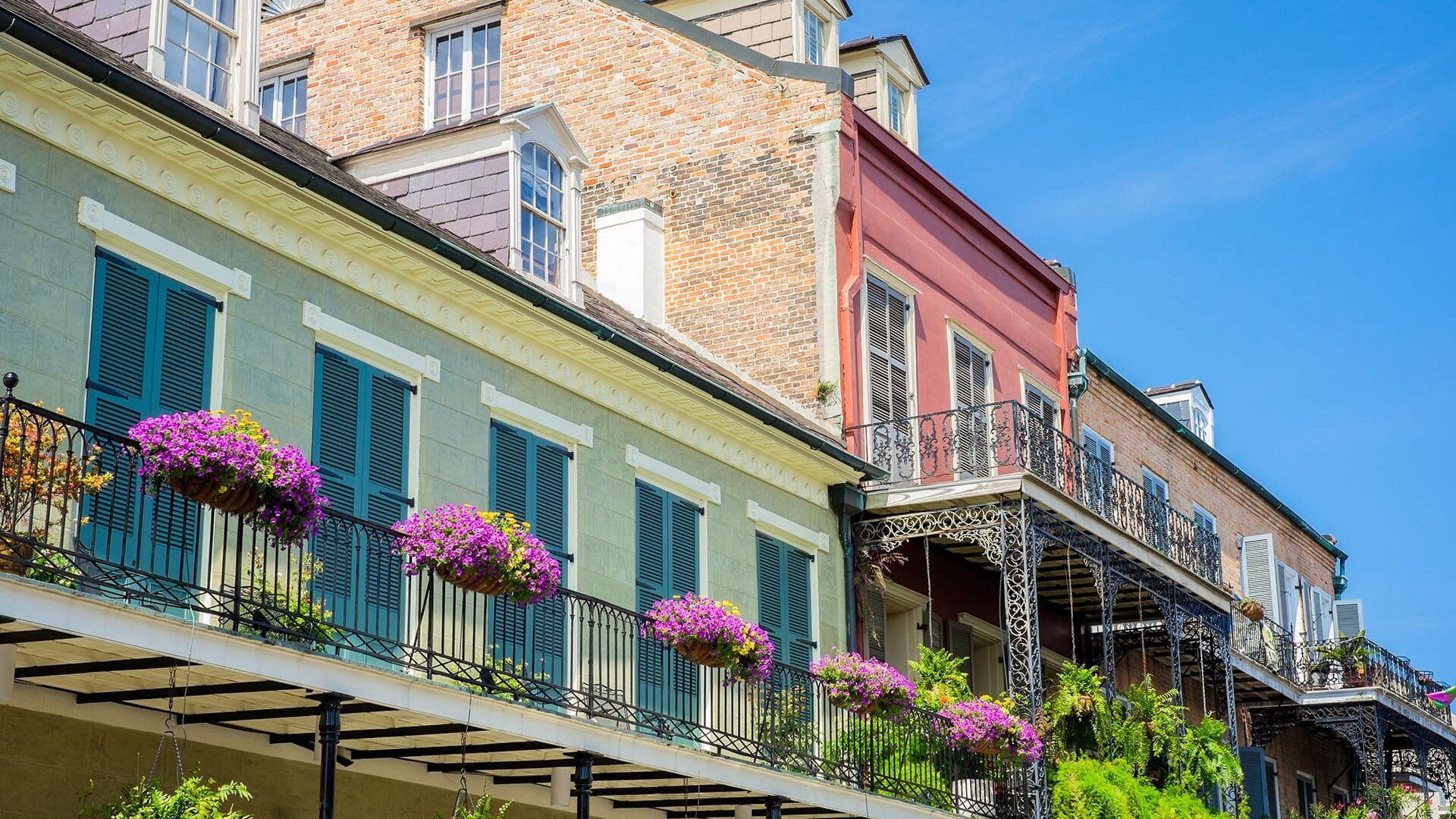Today’s Vieux Carré, also known as the French Quarter, is the 85-square-block original footprint of New Orleans. It is home to nearly 4,000 residents, many of whom work and shop in this walkable neighborhood. It also boasts the oldest and most significant buildings in the city and is the location of the oldest Roman Catholic cathedral in continuous use in the nation. Hollywood celebrities and young entrepreneurs mix with older, long-term residents, keeping the neighborhood at once quaint and glamorous.
Intimate but anonymous, New Orleans’ oldest neighborhood has exerted a spell over writers and artists in its three centuries of existence, including William Faulkner, Tennessee Williams and Truman Capote. By the 1930s, however, this historic neighborhood had fallen into neglect, and many called for its demolition. Instead, local activists fought for — and won — the establishment of the Vieux Carré local historic district in 1936. Exterior changes to buildings are still governed today by the View Carré Commission, a city agency charged with ensuring that the tout ensemble, or historic character of the neighborhoods’ streetscapes, is preserved. French Quarter architecture is a mix of Spanish, French, Creole and American styles. Look for a prevalence of Creole cottages, double shotgun houses, three-story masonry buildings that feature a middle entresol level, and galleried townhomes. Plastered walls and single chimneys were erected after blazes virtually leveled the neighborhood twice at the end of the 18th century. Courtyards and arched fanlight windows are a gift of the Spanish influence. Lacy iron balconies, fragrant vines, vibrant colors and characters from all walks of life make a stroll through the Vieux Carré a transcendent experience.



